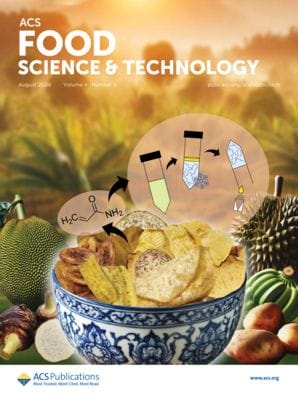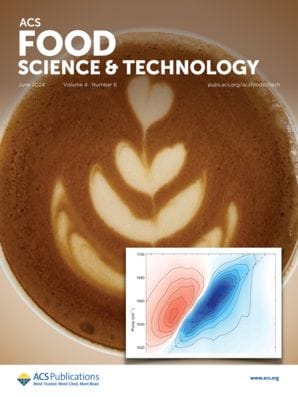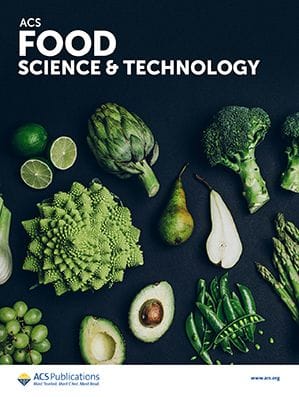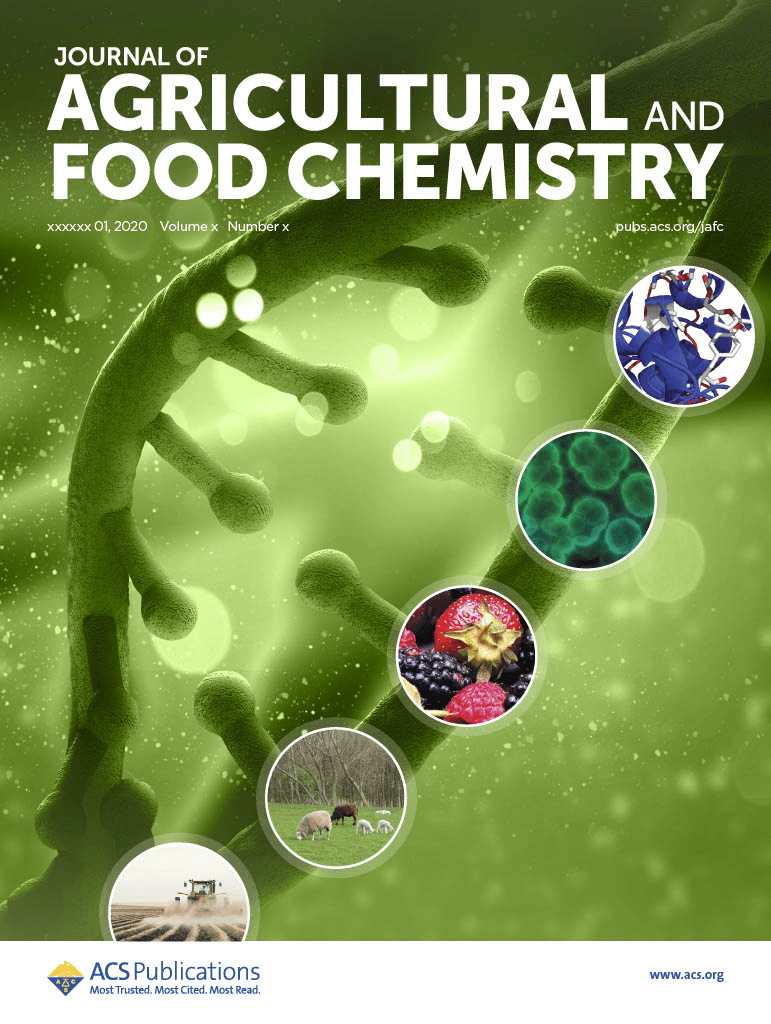From grape to glass, check out what's new in the world of wine research with this collection of recent articles in ACS journals.

Wine has been enjoyed and studied around the world for centuries, and its chemistry plays a vital role in crafting the perfect glass. From the way the grapes are grown to how it's stored, there’s a lot more going on than meets the eye—or taste buds. As new research continues to be published, we’re learning even more about the science behind this beloved beverage. Sip on these recent wine-related articles in ACS journals to discover what’s unfolding in the world of wine chemistry.
Automating Wine's Chemical Profiling with NMR Technology
In this study, a team of Canadian researchers present MagMet-W, a software tool that uses 1H NMR spectroscopy to automatically identify and quantify the chemical composition of wine. This system can analyze 70 wine compounds in just 10 minutes per spectrum, offering an efficient and cost-effective alternative to manual methods. With the potential to enhance wine quality control and consistency, MagMet-W could help winemakers detect flavor profiles, contaminants, and additives while improving consumer safety and product traceability.

Automatic Chemical Profiling of Wine by Proton Nuclear Magnetic Resonance Spectroscopy
DOI: 10.1021/acsfoodscitech.4c00298
Eliminating Smoke Taint in Wine with Targeted Polymer Technology
Smoke from wildfires can often lead to undesirable flavors in wine, a growing concern for winemakers across the globe. To combat this issue, a new study explores the use of molecularly imprinted polymers (MIPs) to selectively remove smoke-related compounds like guaiacol and cresols from affected wine. MIPs that were added post-fermentation were most effective, significantly reducing unwanted compounds while preserving the wine’s aroma and sensory qualities. Though some color loss was noted, this method offers a promising way for winemakers to improve the taste and quality of smoke-tainted wines.

Amelioration of Smoke Taint in Wine via Addition of Molecularly Imprinted Polymers during or after Fermentation
DOI: 10.1021/acs.jafc.4c03912
How Heat Stress Affects Wine Aroma Compounds in Sauvignon Blanc
As climate change intensifies, heat waves and drought increasingly threaten the quality of grape crops by affecting aroma compounds vital to winemaking. This study examines the effects of heat and water stress on the biosynthesis of thiol precursors in Sauvignon Blanc. While many precursors were not significantly impacted, the researchers found that heat stress notably increased the production of the Cys-3SH precursor, linked to aromatic compounds. Despite some uncertainties around the full metabolic pathways, this research offers a foundation for better understanding how climate stress affects grape quality and flavor profiles.

Using In Vitro Cultured Berries to Unravel the Effects of Heat- and ABA-Induced Stress on Thiol Precursor Biosynthesis in Sauvignon Blanc
DOI: 10.1021/acs.jafc.4c00471
Understanding Proanthocyanidin Changes in Napa Valley Cabernet Sauvignon
Proanthocyanidins (PAs) are compounds that contribute to wine’s color, aging potential, and astringency—key factors for red wine quality. Historically, studies have focused on how PA composition and concentration affect these properties, but understanding the subjective nature of astringency has been challenging. This survey of Napa Valley Cabernet Sauvignon found significant variability in PA activity during ripening across vineyards, driven by factors like elevation and soil. The study suggests winemakers can potentially manipulate PA levels to influence mouthfeel, offering new possibilities for vineyard management and wine quality.

Napa Valley Cabernet Sauvignon Proanthocyanidin Changes During Fruit Ripening: A Multi-Appellation Survey
DOI: 10.1021/acs.jafc.4c02146
How Yeast Mannoproteins Influence Wine Aroma Preservation
Over time, wines can lose their fruity aroma as volatile compounds diminish. This study looks into how mannoproteins (MPs) from different yeast strains—Saccharomyces cerevisiae, Pichia fermentans, and Pichia kluyveri—affect the volatility of fruity esters in wine. MPs with higher protein content, particularly from Pichia strains, were found to significantly reduce ester volatility by forming more stable complexes through van der Waals forces and hydrogen bonding. These findings offer insights into how yeast MPs can preserve wine aroma during extended storage.

Impact of the Chemical Composition and Structure of Yeast Mannoproteins from Pichia Strains on Wine Fruity Ester Release
DOI: 10.1021/acsfoodscitech.4c00021
Exploring the Terroir of Mexican Wines
This comprehensive review explores how geography, climate, and soil influence the quality of Mexican grapes and wines. Mexico’s diverse wine regions feature a range of climates and soil types that contribute to the high acidity and complex profiles of Mexican wines; however, the authors highlight a lack of research on terroir in Mexican viticulture. They note that studies could focus on how these environmental factors impact wine quality, using modern technologies like remote sensing and precision agriculture to optimize vineyard management and boost Mexico's presence in the global wine market.

Mexican Wines: Impact of Geography, Climate, and Soil on the Quality of the Grape and Wine─A Review
DOI: 10.1021/acsfoodscitech.4c00222
Decoding Antioxidants: What’s Really Boosting Red Wine’s Power?
This study analyzed 250 red wines to investigate how antioxidant activity correlates with various wine components. Significant connections were found between antioxidant activity and factors like pH, sugars, organic acids, and magnesium, with phenolic compounds—such as catechins, flavonols, and polymeric pigments—playing a dominant role. Interestingly, resveratrol, often linked to health benefits, did not correlate with antioxidant activity, suggesting the need to consider the full phenolic profile. The research highlights the intricate relationship between a wine's antioxidant properties and its chemical makeup, demonstrating that a wide range of compounds—not just one—contribute to a wine’s health benefits and quality, especially as it ages.

Correlations between Antioxidant Activity and Chemical Composition in Diverse Red Wines
DOI: 10.1021/acsfoodscitech.4c00219
